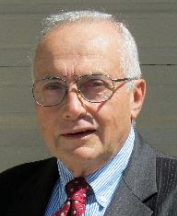FCC: The Future and Security of the Emergency Alert System

[April 2016] Wednesday during NAB Week is traditionally when we hear from the FCC’s Public Safety and Homeland Security Bureau (PSHSB) on current EAS issues.
Gregory Cooke, the Associate Chief, Policy & Licensing Div, of the PSHSB and Steven Carpenter, Cybersecurity Engineer, PSHSB presented.
With the publication of the EAS 15-94 Notice of Proposed Rulemaking (NPRM), this year’s session title was “The Future and Security of the Emergency Alert System.”
Cooke said the goal of the PSHSB is to take the essential role of EAS and “increase its value.”
While he did not go into great detail on the NPRM, he emphasized the importance of the EAS stakeholder community reading 15-94 and filing timely comments.
Changes Coming From the PSHSB

Cooke told the audience that an important part of the FCC’s goal for improving the EAS Test Reporting System (ETRS) is to compile a comprehensive online monitoring assignment database based on input from EAS Participants.
Once the new report system has been structured and populated, he believes a more accurate nationwide mapbook (the requirement for the mapbook that is called for in Part 11) can be compiled.
At that point, Cooke went on to talk about the need to “standardize state (EAS) plans.”
In the words of the NPRM, “We propose to convert the paper-based filing process for State EAS Plans into a secure, online process using a State EAS Plan Filing Interface (SEPFI) that would be designed to interoperate with the ETRS.”
Cooke sees this as a way to help EAS state and local committees in this process as part of what he termed “community based alerting.”
Live Code Testing
Cook also commented on the need for live code testing for both weather and civil EAS events.
His idea is to “train the public” on proper response to alerts based on local and regional risks. He wants to see future authorization of public service announcements using the twotone EAS attention signal.
Cable Tuning
The technology the Cable industry uses for EAS was Cooke’s next focus.
Many cable systems still use equipment that results in “forced tuning” namely switching all channels on a cable system to a warning screen. While accomplishing the letter of Part 11’s requirements, this approach is well known to EAS committees as a source of many cable viewer complaints.
Many non-cable EAS stakeholders believe that forced tuning switching away from live coverage by television news organizations deprives viewers of follow-on information needed for long form news sources to tell the public at risk details on what they should do after warnings are issued.
The NPRM talks about the advisability of mandating selective override tuning to remedy this situation. This issue is very controversial in the cable industry because of the high cost to replace current equipment that cannot support selective override.
Multilingual Aspects
The NPRM asks for Comments on the longstanding issue of multi-lingual EAS warnings, and on the new issue of automatic earthquake alerting that is now mandated by legislative action in California – and potentially other states.
These are complex and controversial issues the Commission hopes will receive thoughtful input from EAS stakeholders.
Unrest in the Field
The FCC session was not well attended.
Some EAS subject experts believe that many EAS Participants, as well as entities that volunteered for LP status when EAS began, have lost patience with promises for EAS improvement, lack of interest in issuing warnings from many in the emergency management community, legacy EAS audio quality issues, and delays in implementing CAP-based warnings in many regions.
As the industry awaited action, the Federal Emergency Management Agency (FEMA) had come up with a name for their CAP-based warning approach that includes the EAS: the Integrated Public Alert and Warning System (IPAWS). Frustrations in the EAS Participant community also can be traced to the slow progress the Federal warning partners have made towards “integration” and the continued lack of a truly national warning strategy.
Volunteers Still Waiting
All that said, there are still a number of EAS stakeholder/subject experts who are serving on EAS-related working groups.
Under the Communications Security, Reliability, and Interoperability Council (CSRIC) and other EAS improvement efforts they believe the industry and regulators can work together to improve the warning process in order to save lives and property.
Despite the difficulties in getting the broadcast community, federal agencies, and the public sector to really communicate and solve problems, such volunteers continue to devote their time and resources to work with all of the Federal Partners to that end.
– – –
A regular contributor to The BDR and a core member of the Broadcast Warning Working Group (BWWG), Richard Rudman is the owner of Remote Possibilities in Santa Paula, CA. He has extensive experience from small to major markets. Contact Richard at rar01@mac.com
